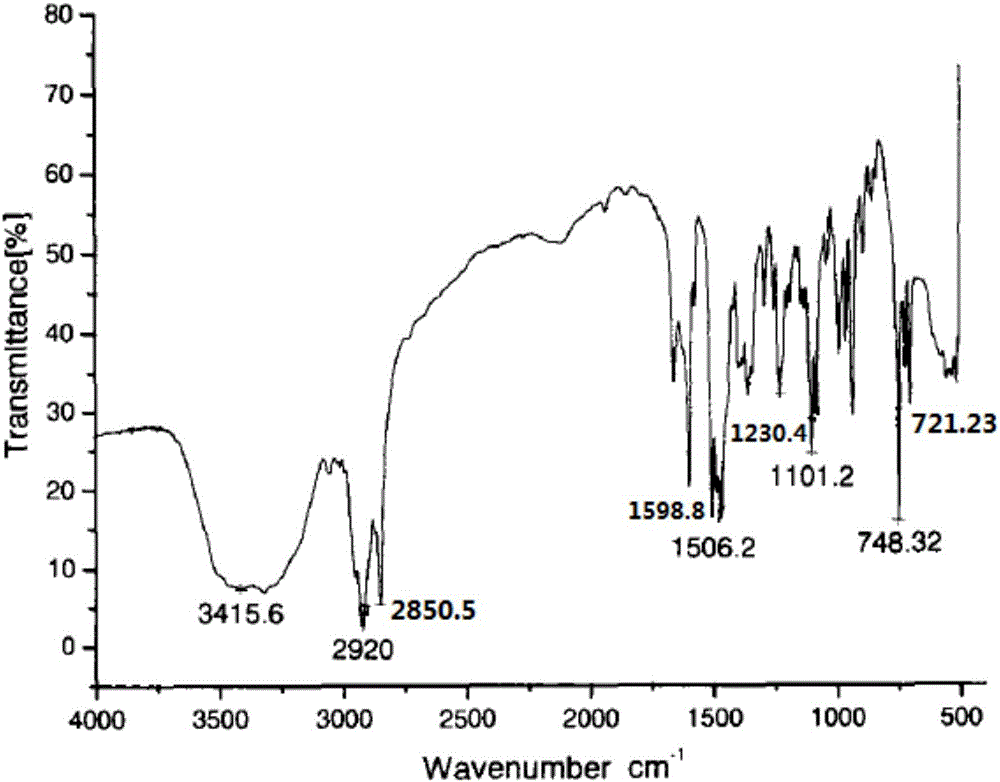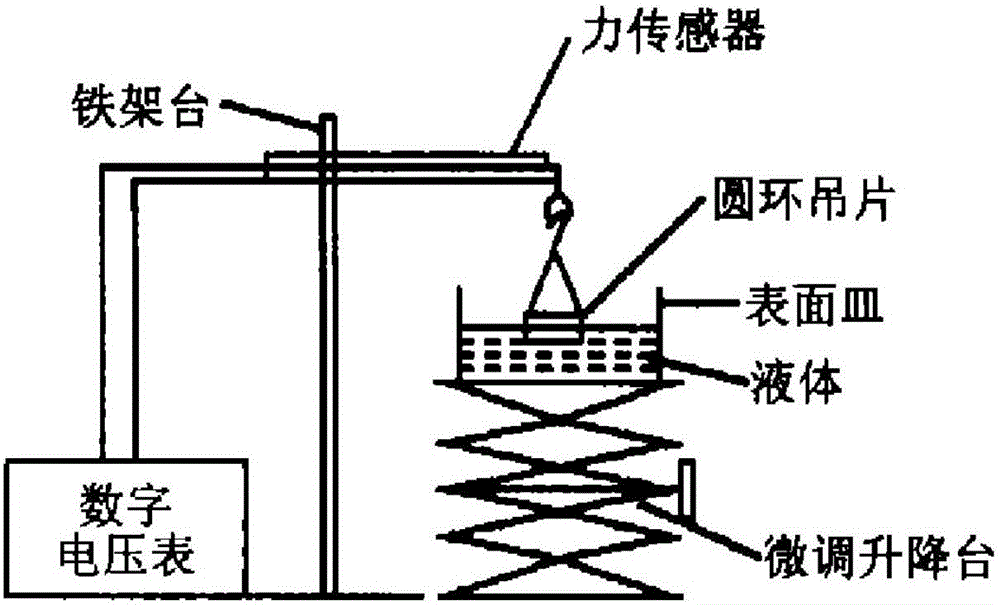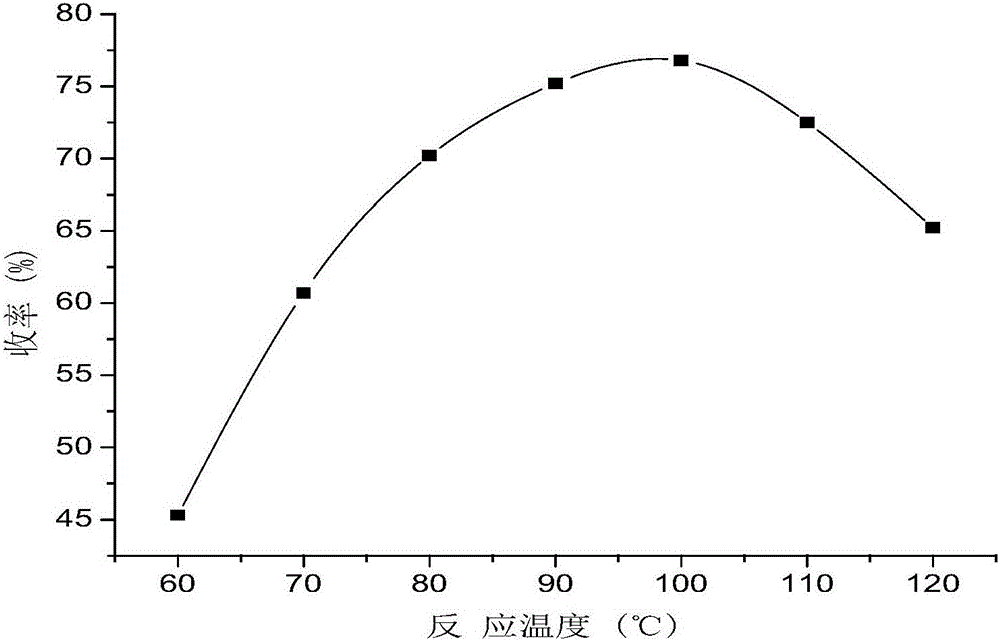Synthesis method and application of 2-chloride, 3-poly hydroxypropyl dodecylamine quaternary ammonium salt surfactant
A technology of surfactant and polyhydroxypropyl, which is applied in the field of 2-chlorination, can solve the problems of high price and difficulty in mass production of Gemini surfactant, and achieve the effects of easy industrialization, high conversion rate and good performance
- Summary
- Abstract
- Description
- Claims
- Application Information
AI Technical Summary
Problems solved by technology
Method used
Image
Examples
Embodiment 1
[0062] The Gemini surfactant 2-chlorinated, 3-polyhydroxypropyl dodecylamine quaternary ammonium salt surfactant is synthesized by a two-step method, that is, dodecylamine is first reacted with epichlorohydrin to synthesize with dichloro substitution The intermediate of the base; the dichloro intermediate is then reacted with N,N-dimethyldodecylamine to synthesize the Gemini surfactant 2-chlorinated, 3-polyhydroxypropyldodecylamine quaternary ammonium salt Surfactant. The specific operations are as follows:
[0063] 1) Synthesis of intermediate N,N-bis(2-hydroxy-3-chloropropyl)dodecylamine:
[0064] In a four-necked flask equipped with mechanical stirring, reflux condenser, thermometer and dropping funnel, accurately weigh 9.2680g (0.05mol) of dodecylamine and add, then add 50mL of absolute ethanol as solvent, stir to dissolve dodecylamine, Then take 9.3455 g (approximately 7.92 ml, 0.10 mol) of epichlorohydrin with a purity of 99% into the dropping funnel, and slowly add dropwis...
Embodiment 2
[0085] According to the results of the single factor experiment in Example 1, the fixed solvent dosage in the experiment was 50mL. The orthogonal experiment was used to investigate the influence of the four factors of raw material molar ratio, reaction temperature, reaction time, and reaction solvent on the yield of the target product. The L9(34) orthogonal table has investigated the four factors and three levels of the reaction. The orthogonal experimental conditions are designed in Table 1, and the target product yield is used as an indicator. The results obtained from the orthogonal experimental conditions in Table 1 are listed in Table 2. .
[0086] Table 1 Orthogonal experimental factors-level table
[0087] factor Raw material molar ratio (A) Reaction temperature (B) Response time (C) Reaction solvent (D) 1 1.8:190℃12h Absolute ethanol 2 2.0:1100℃14h N-propanol 3 2.2:1110℃16h Isopropanol
[0088] Table 2 Orthogonal experiment optimization data table
[0089]
[0090] It ca...
Embodiment 3
[0092] The actual optimal scheme of Examples 1 and 2 was used to produce 2-chlorinated, 3-polyhydroxypropyl dodecylamine quaternary ammonium salt surfactant, and the specific steps are:
[0093] 1) Synthesis of intermediate N,N-bis(2-hydroxy-3-chloropropyl)dodecylamine:
[0094] In a four-necked flask equipped with mechanical stirring, reflux condenser, thermometer and dropping funnel, accurately weigh dodecylamine (its infrared spectrum such as Figure 7 As shown) 9.2680g (0.05mol) was added, and then 50mL of absolute ethanol was added as a solvent, stirred to dissolve dodecylamine, and then 99% pure epichlorohydrin ((The infrared spectrum is as Figure 8 Shown)) 9.3455g (approximately 7.92ml, 0.10mol) into the dropping funnel, slowly dripped, after the dripping is completed, continue to stir and react at room temperature for 12h. After the reaction is stopped, set the temperature of the water bath of the rotary evaporator to 40°C, and distill under reduced pressure for 2 hours to ...
PUM
 Login to View More
Login to View More Abstract
Description
Claims
Application Information
 Login to View More
Login to View More - R&D
- Intellectual Property
- Life Sciences
- Materials
- Tech Scout
- Unparalleled Data Quality
- Higher Quality Content
- 60% Fewer Hallucinations
Browse by: Latest US Patents, China's latest patents, Technical Efficacy Thesaurus, Application Domain, Technology Topic, Popular Technical Reports.
© 2025 PatSnap. All rights reserved.Legal|Privacy policy|Modern Slavery Act Transparency Statement|Sitemap|About US| Contact US: help@patsnap.com



